
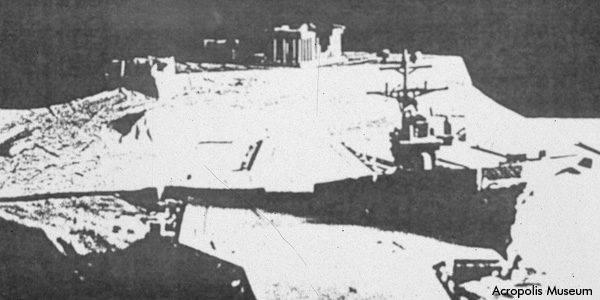

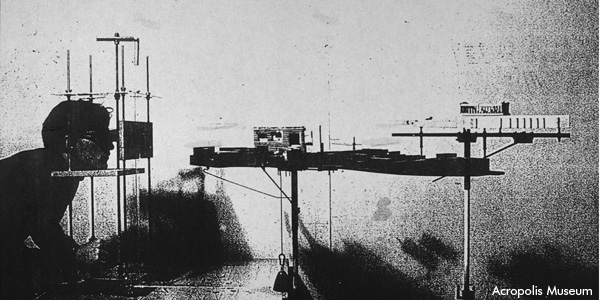



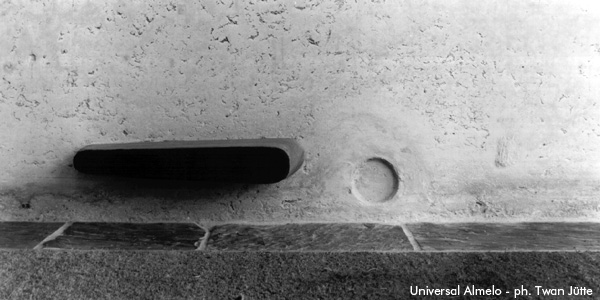

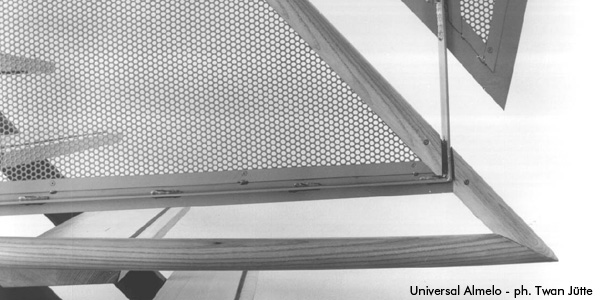

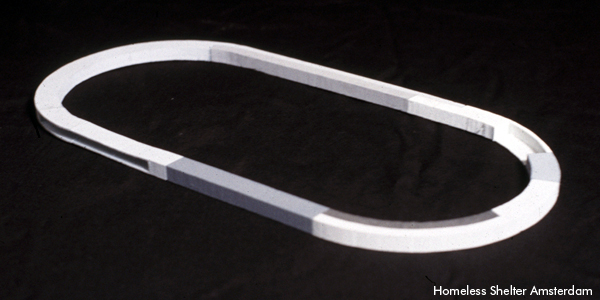
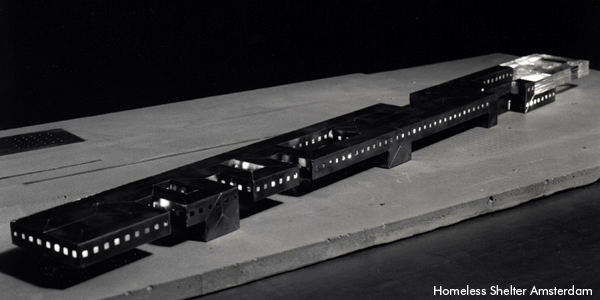

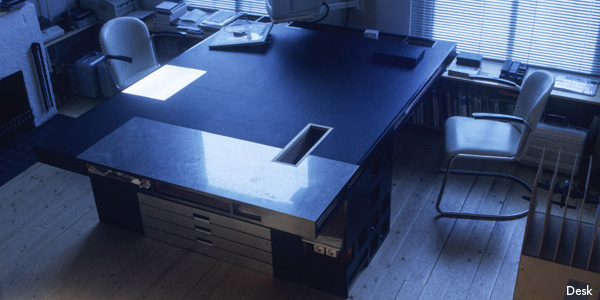
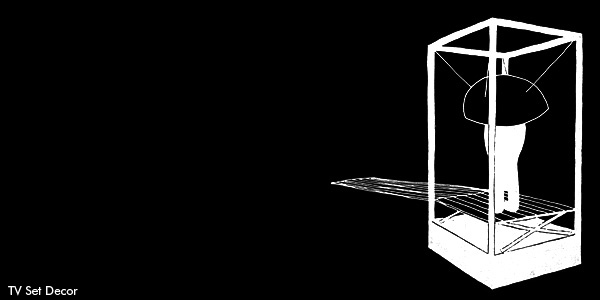
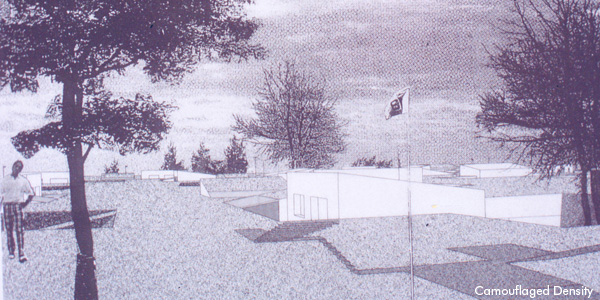
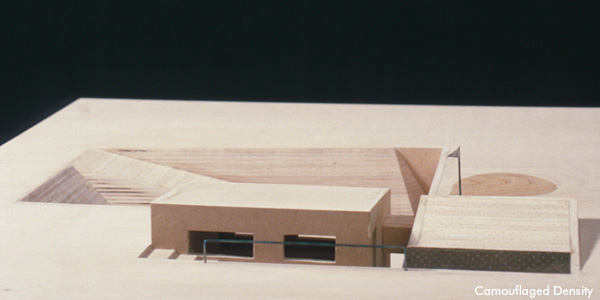
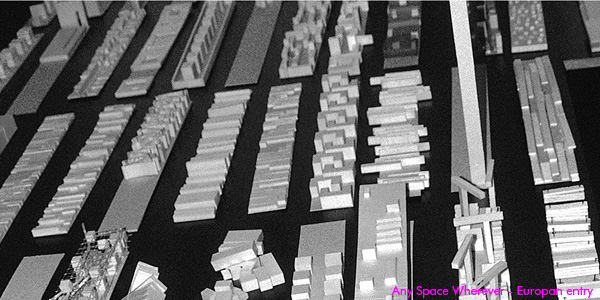
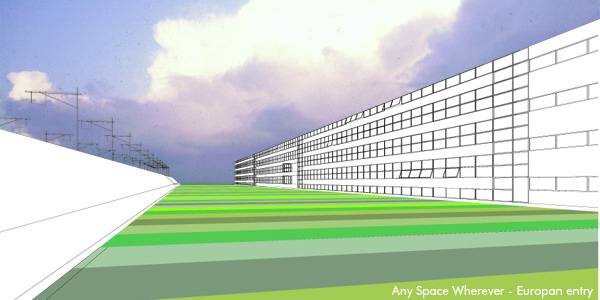


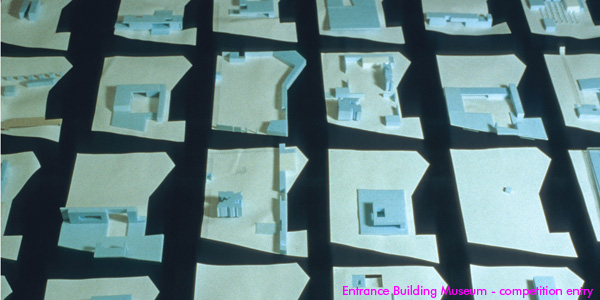
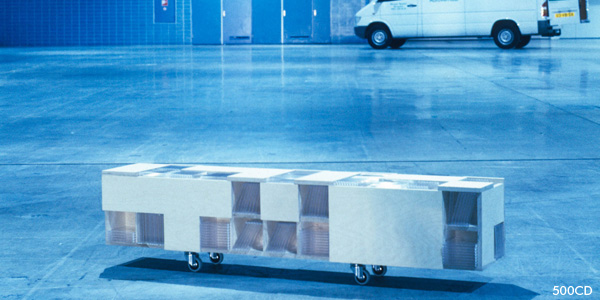
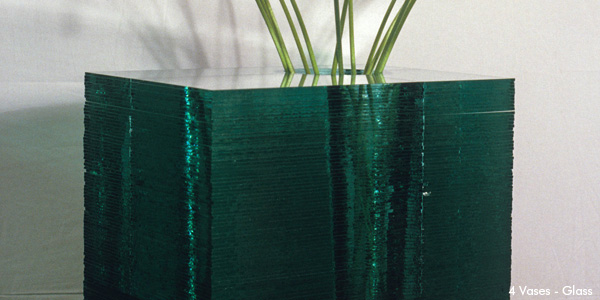
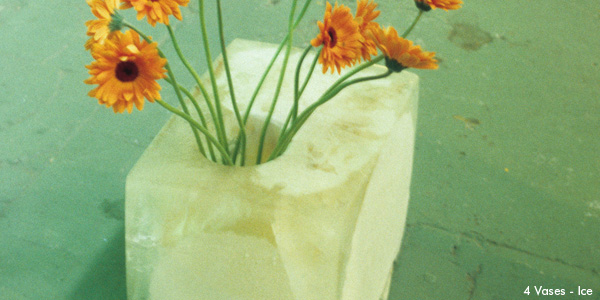
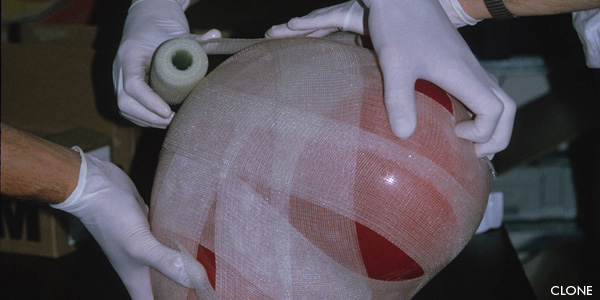



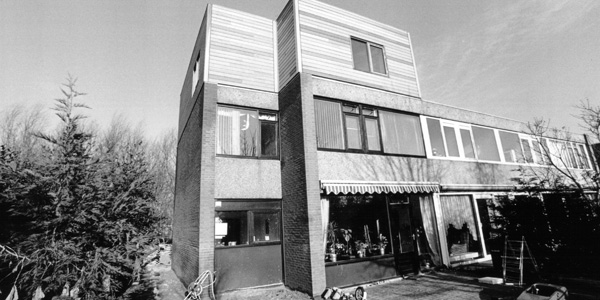

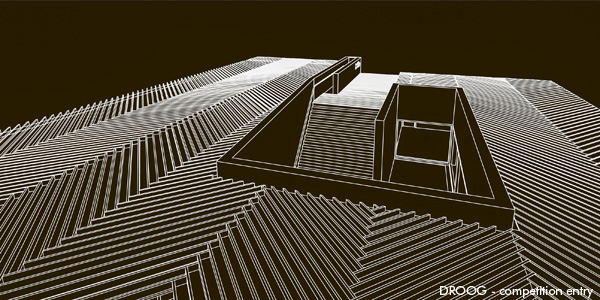
collaborators
Siebe Bakker, Egbert Boertien, Bonnie van der Burgh, Eugene Dumoulin, Ilke van Engelen, Martina van Ess, Court Haegens, Annerieke van Hoek, Dennis Kaspori, Adam Kurdahl, Mariëtte Nijkeuter, Peter Oudshoorn, Henk Ovink, Hans Scherpenzeel, Mercedes Sweeb, Reonald Westerdijk
nine statutes for a complementary architectural training
Article 1 - complementary training
The training operates as complement to the existing curriculum. Also, the existing facilities will be used. Within the training there will be a focus on differences with the existing curriculum, not on contradictions. Formally the training can be seen as a differentiation.
Article 2 - critical abilities
Students are supposed to develop a critical attitude towards their own work, work by colleagues and others, the profession in general and the training itself.
Article 3 - interdisciplinarity
Architecture means thinking on order, space, body and experience. Thinking that can be tested and developed in collaboration with filmmakers, artists, scientists, dancers, choreographers, sportsmen and philosophers. Architecture will function as context and framework.
Article 4 - planning and presentation
Only a development of ideas is not sufficient. Planning of the design process and presentation of ideas are part of the skills students are asked to master.
Article 5 - projects
The training will have a project-oriented format. Built up of project team, tutors, format and duration will vary per project. Project teams are responsible for the full organization. Any project will not be limited to a design assignment but will contain the organization of the project team, financial organization, planning and presentation as well.
Article 6 - research and design practice
Students will be exposed to circumstances that are very similar to 'commercial' research and design practices. Projects that qualify are investigations, competitions and real building assignments.
Article 7 - selection
Selection of participants will be based on an interview. Regardless of level of education or discipline, portfolio and motivation will be the most important criteria for qualifying. Participating will be possible for a maximum duration of one year. The selection procedure is open to anyone who is willing to think on order, space, body and experience.
Article 8 - continuity
All relevant information in order to maintain the institute, as documentation, project scenarios and texts, will be collected in such a way as to be transferable to future project teams.
Article 9 - application and information
bureaubakker
bureau bakker kaspori architects
architecture is a process that is structured through tactics and tactilities. A practice of strategic alliances and material in(ter)ventions applicable in education and research as well as in designing buildings and interiors.
To design is to explore. Ideas are tested to extremes, to the level where all possibilities and limitations surface. Fascination, resistance, frustration, collaboration, camouflage and exploitation are some of the tactics that best describe our design process. Opened to unanticipated, absurd and even subversive influences a basis is formed for unforeseen notions, attractions or solutions to arise.
Our work is not based on external coherence, on how it appears, but on the utilization of the internal logics of the projects themselves. Form follows. Understanding the specific character of the processes and structures creates analogies that enable cross-disciplinary alliances, providing conditions for continuous innovation.
michael speaks on lab architects
As part of the first generation of architects for whom the work of Derrida, Deleuze, Foucault, Kristeva, Baudrillard, etc., is not some foreign tongue to be learned and then repeated with every presentation - as it was for Eisenman and Tschumi, for example - but a crucial and unavoidable feature of that condition we call contemporary architecture, LAB necessarily wrestles with the role theory plays in their practice of architecture. LAB's early work narrates the struggle of young architects coming to terms with a discipline whose very power and strength is its mediocrity, that is, its ability to resist outside interference, and the kinds of self-criticism undergone by almost every discipline in the last forty years or so. Architecture's greatest power is its ability to stay the same while appearing to become something else. In their Acropolis Museum project, which functions for them as a starter culture for their still growing oeuvre (erve), LAB put to architecture questions that it has historically been allowed to refuse: questions regarding the body, transgression, images, simulation. Indeed, this question forms the infrastructure of their attempt to build a new, self-critical way of dwelling in the house of architecture.
But what is that new dwelling, and what is its relationship to theory? LAB calls architecture a prosthesis. It is for them a device used to create order. But we might ask is theory also for them a device, a device used to create architecture. In my remarks I have attempted to outline two different ways theory affects architectural practices. One, in which theory is an attachment used to generate forms; and the other in which theory is one among a whole range of forces that shape the practice of architecture. There is little doubt that LAB has folded deconstruction into their practice of architecture. LAB reads and rewrites, they deconstruct and reconstruct architecture in an attempt to shake at its foundations our received image of architecture as a systematic practice of ordering and stabilizing. This is done in an attempt to make architecture more flexible, more useful in the chaotic world we now dwell in. Rather than stylistic deconstructivists, then, who represent deconstruction in architectural forms, LAB engages in an architectural practice of deconstruction. In this they, like Tschumi, Diller and Scofidio, Eisenman, and others, have been successful in undermining architecture, in forcing it to become more self-critical. But has this actually resulted in a new way of dealing with the ordered chaos within which we all swim today? Does this self-critical architecture answer to the new conditions of the global flows of capital. In a stunning comparison of the houses of Mies van de Rohe and the Schroeder house by Rietveld, Rem Koolhaas has suggested that while the Schroeder House appears to offer liberation with its almost infinity of movements and combinations, its richness of movement overstimulates and stifles us. Mies' houses, on the other hand offer a kind of freedom by first making a strong, ordered statement. Koolhaas sums up the differences as follows: "Does there exist a freedom that is binding and in contrast something that fixes in order to liberate?" Mies fixes in order to open up avenues of freedom while by offering infinite choice Rietveld stifles us. Is it possible that the infinite free-play of deconstruction, and of theory as it has been used by architecture until now comparable to the gypsy house of Rietveld? Can deconstruction offer new freedoms when it claims to never offer anything new, but only a differential and deferred image of something that has always been? On another front, do the infinity of chaos diagrams and models trotted out today by young architects (van Berkel and Bos come to mind) offer new degrees of chaotic freedom or do they trap and enervate? Does the LAB desk (which one cannot help but remark bears a strong resemblance to the Schroeder house) simply represent a more flexible image of furniture, or does it offer us something new? Does LAB's use of fractal geometry result in the kind of flexibility required in the artificial green heart, which seems to demand more degrees of freedom than the Dutch soil can accommodate? These are the questions for architecture, these are the questions for theory.
Michael Speaks
projects
BUREAU BAKKER KASPORI ARCHITECTS
MANUAL
continuously extending associative lexicon, notes and guidebook of an ongoing investigation into concept development an decision and design strategies within various disciplines. The investigation is in constant dialogue with all office activities and covers themes like philosophy, theory, form, history, management and practice besides numerous more and less related fascinations.
Indurben, Dordrecht, design study, i.c.w. Christian Weiler
Droog, architectural institute, Almere, design contest, honorable mention
Bewoningsin(ter)venties
research (strategy development) into settlement conditions and management structures for individual housing, Netherlands Architecture Fund, Amstelland Ontwikkeling, Ministry of Housing, Spatial Development and Environment (VROM) and the Municipality of Almere
Parkvilla, Schandelerboord, Heerlen, The Presence of Urban Space II, design
Parkcity – Parkway - Parkmodel, Schandelerboord, Heerlen, The Presence of Urban Space II, urban design
The 100% Rule, art in the public domain, Nieuwegein, i.c.w. Henk Ovink, strategy - masterplan
Stretch to Fit, city bench, Competition Utrechtse Stadsbank, i.c.w. Henk Ovink, design
nominated by the public jury
CLONE, Lamp, i.c.w. Henk Ovink, executed
nominated for the Dutch Furniture Awards 1999
Table Grip, design
2001, A Space Commodity, design research into the phenomenon 'mobile home'
500 CD, cd-storage, executed
nominated for the Dutch Furniture Awards 1999
Extension, 3rd floor house, Rotterdam, executed
4 Vases, executed
Salontafel, Den Haag, designs
Inline Carrier ©, skateboard, prototype
Exhibition furniture for artist, executed
Density Manipulations ©, design research into the fringes between housing and 'green'
More of the Same, spatial development of the Netherlands up till 2030, Het aanzien van Nederland, strategy
Any-Space-Wherever, square / housing / offices, Almere, Europan 5, competition design
nominated for the ‘International Forum of Juries and Towns’
BUREAU BAKKER DELFT
Sound Barrier Houses, research & designs
Refurbishment offices, Oude Delft, Delft, designs
Refurbishment office, Museumplein, Amsterdam, executed
Coffee table, Baarn, designs
Housing and marketing Nike, i.c.w. Dré Kampfraadt, designs
Camouflaged Density ©, design research into urban developments and housing typologies, Arnhem / Nijmegen, UnderCover, i.c.w. Wim van den Bergh
Dwelling/Working building, i.c.w. Twan Jütte, design
Refurbishment living room, Baarn, executed
Refurbishment sleeping room, Delft, executed
Refurbishment bathroom, Den Haag, executed
Urban Fabrics ©, Housing, Almelo, Europan 4, competition design
Decor TV program, design
Housing, Shinkenchiku Residential Design Competition 1995, competition design
TV-furniture, Amsterdam, designs
LAB ARCHITECTS
Entrance building, Open Air Museum, Arnhem, Prix de Rome – architecture, 1995, competition designs
Refringerator, urban study Randstad / Achtkamp, Inside Randstad Holland, competition design
Villa Oropos, Griekenland, i.c.w. Katerina Zisiadou, design
Light, Den Haag, design
Polder House, design
Homeless Shelters, New York / Amsterdam, i.c.w. Arie Graafland, designs and presentation (models) for the publication ‘Het onbehagen van de architectuur, dakloos in New York en Amsterdam, SUN, Nijmegen, 1995
Housing, Groningen, Europan 3, competition design
Bureau, Delft, executed
Refurbishment station square, Bergen op Zoom, and market square, Roosendaal, Probleem Pleinen Prijsvraag, competition designs
Refurbishment office, Delft, executed
Viewing Platform for advertisement tulip field, Douwe Egberts (Sara Lee), Schiphol, designs
University Campus, Cyprus, International Design Ideas Competition for the Campus of the University of Cyprus, i.c.w. Wim van den Bergh, competition design
Sofa, office, Almelo, design
Architecture School, Shinkenchiku Central Glass International Design Competition 1992, competition design
Refurbishment and extension office machine factory, Almelo, executed
The Acropolis Museum – dwelling in differentce, hotel / museum
graduation project, TU Delft, honorable mention
Dwelling Building – The Invisible Cities, two villa’s – museum / swimming pool, design
1998 - 2001
Bureau Bakker Kaspori Architects
with Dennis Kaspori
1996 - 1998
Bureau Bakker Delft
1992
project architect OMA: Jussieu - Two Libraries
1990 - 1995
LAB architects
with Peter Oudshoorn